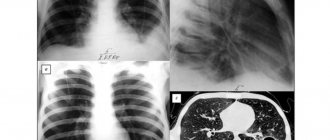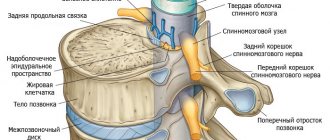Pathogen
The causative agent of the pathology is the yeast-like fungi Candida. They are even included in the healthy microflora of the oral mucosa and are present in 60% of healthy adults and half of infants. With increased reproduction they cause a lot of unpleasant sensations.
Glabrata is more common in the body of older people, Candida Parapsilosia - in infants. Less commonly diagnosed are species such as C.sake, C.rugosa, which are observed in AIDS, diabetes, and cancer.
Stomatitis in the mouth
The oral mucosa very quickly becomes swollen, turns red, and any touch with the tongue or food causes pain. Stomatitis in the mouth (photo 5) is localized on the entire mucosal surface, forming small blisters. Gradually, the transparent liquid filling them becomes cloudy. Bursting blisters form numerous ulcers. Often stomatitis in the mouth is presented as one continuous erosion.
Stomatitis on the gum
Sometimes, before you understand what stomatitis looks like, it can be confused with another disease. Stomatitis on the gum (photo 6) can begin as a small hard grain, just like a symptom of root inflammation of the tooth. Only when the gingival papillae and marginal areas around the teeth turn red, itching and plaque appear, one can guess that this is stomatitis on the gums.
Stomatitis on the palate
It is characterized by the appearance of painful aphthae, located singly. Since stomatitis on the palate (photo 7) is caused by thrush fungus, a cheesy coating initially forms, located in white spots. When fungal layers accumulate, stomatitis on the palate forms painful erosions.
Herpetic stomatitis
Caused by the herpes simplex virus, herpetic stomatitis (photo in a mild form is represented by a small number of blisters. Stomatitis develops equally actively in adults and children and in severe form is accompanied by toxicosis, malaise. Lymph nodes enlarge. A feature of herpetic stomatitis is that the host body never won't leave.
in a mild form is represented by a small number of blisters. Stomatitis develops equally actively in adults and children and in severe form is accompanied by toxicosis, malaise. Lymph nodes enlarge. A feature of herpetic stomatitis is that the host body never won't leave.
Ulcerative stomatitis
It is the next stage of catarrhal stomatitis. Ulcerative stomatitis (photo 9) develops more actively when a person has any intestinal diseases. It forms plaque-covered defects to the full depth of the mucosa. It's quite difficult. It is especially painful when stomatitis on the tongue forms a colony of ulcers, making it difficult to take not only food, but also water.
Stomatitis on the throat
Initially, the soft tissues become very swollen and swell. Stomatitis on the throat (photo 10) is very itchy and pain occurs on palpation. Against the background of a sore throat, stomatitis in children is accompanied by a smell and thick mucous salivation. Stomatitis on the throat is expressed by stomatitis rashes, mostly oval in shape. The injuries are extremely painful and can number in the dozens. General symptoms are similar to catarrhal stomatitis.
Stomatitis on the lips
Stomatitis on the lips (see photo 11) affects the red border and adjacent skin with blistering rashes. This is a distinctive sign from ordinary herpes. Swelling and painful aphthae appear. The entire surface layer becomes inflamed. Stomatitis on the lips is caused by bacteria, viruses, and infections. Sometimes the development of the disease is preceded by an allergy.
What is candidal stomatitis?
Candidal stomatitis develops under certain pushing factors. The disease can be contracted through the use of shared household appliances and personal hygiene items, especially toothbrushes.
On this topic
- Stomatitis
How to identify and treat ulcerative stomatitis
- Olga Alexandrovna Novikova
- August 14, 2020
With proper treatment, stomatitis goes away within two weeks. There are often cases where the pathology recedes without the use of medications, and sometimes it is difficult to cope with it with enhanced therapy. However, in the absence of therapeutic measures, the risk of thrush spreading to other organs increases: the genitals, esophagus, intestines, and even the skin.
Thrush in the mouth can manifest itself in such forms as herpes, another type of stomatitis, gingivitis, glossitis, etc. People most susceptible to the disease are those with weakened immune systems – infants and the elderly.
Symptoms and signs
This disease (often called “thrush in the mouth”) is characterized by the presence of a thick, milk-colored coating on the mucous membranes, which resembles a curdled mass.
https://www.youtube.com/watch?v=J2Q7AvOrD5E
In children under one year of age, who feed mainly on milk, such symptoms lull parental vigilance - adults think that the baby has remnants of mother’s milk or formula in his mouth.
It is important to make sure that this is the case. If you are not so sure, you need to seek help from a doctor.
By the way, you can dispel doubts in the following way: food residues usually disappear by the next feeding. If clots resembling cottage cheese still remain, you should try to remove them.
Did it work out, and was it easy? So it really was food. Having problems? Then perhaps these are symptoms of the disease.
Plaque can cover all the mucous membranes of the oral cavity: “milk” plaques appear on the tongue, on the lips and cheeks (from the inside) and even on the tonsils.
Other symptoms that indicate that the child is sick:
- swelling of the mucous membrane, making swallowing difficult;
- eating is accompanied by crying;
- loss of appetite and weight;
- abdominal pain, dyspepsia (in a situation where an infection from the mouth moves to the intestines).
Signs of the disease in adults are somewhat similar to those in children, but an adult, unlike a child, can describe his condition in detail. This:
- burning sensation, first in the throat, then throughout the entire oral cavity;
- loss of the usual taste characteristics of products, often an unusual “metallic” taste from the food eaten;
- when trying to remove plaque, mucous membranes bleed.
Kinds
There are several types of candidal stomatitis, which depend on the clinical picture, and each of them can be in acute or chronic form. All this depends on how old the pathology is.
Spicy
In the acute form, the symptoms are pronounced. Patients often complain of weakness, fatigue, and fever. This type is divided into pseudomembranous and atrophic.
Pseudomembranous
Pseudomembranous candidal stomatitis is the most common and has three degrees:
- Mild degree - usually patients do not have any complaints. A light white coating forms in the mouth, which is easily removed and no signs of damage are found underneath.
- Moderate severity – a serous-white plaque of increased density is observed, occupies a large area of the oral mucosa and is difficult to remove. When removing plaque, bleeding is observed. Nearby lymph nodes begin to enlarge and hurt.
- Severe degree – causes deterioration of the general condition. A dark gray coating is found on the mucous membranes, under which the surface bleeds. Painful cracks (candida lesions) appear on the corners of the mouth, regional lymph nodes are significantly enlarged. This degree of the disease requires mandatory medical intervention.
Chronic
The chronic form develops in the absence of necessary therapy during the acute stage of the fungal disease. It is manifested by a burning sensation, pain and difficulty swallowing.
It is also characterized by pathological changes in the oral mucosa. This consists in thinning of the mucous membrane, its drying out, changing color to deep red, the affected areas are clearly visible, which are covered with plaque. If there is no proper therapy, the risk of the disease spreading to other organs increases.
Atrophic
The atrophic appearance manifests itself after prolonged antibiotic treatment and the use of corticosteroids. This is an acute form.
Another reason could be injuries to the mucous membrane (often caused by dentures). This is a chronic form.
Acute leakage often affects the mucous membrane of the tongue. It is characterized by burning and dryness of the tongue, pain when eating or talking for a long time. Spots with a smooth surface appear and a film forms around the perimeter. Places of exfoliation and peeling of the epithelium are visible. The surface of the mucous membrane swells, fills with blood, and full tongue movement becomes difficult.
In the chronic process, swelling of the mucous membrane is also observed, and the skin becomes very red. Candida lesions appear in the corners of the mouth.
Hyperplastic
It often develops when taking antibiotics and cytostatics. People with blood pathologies, HIV infection, and tuberculosis are more at risk of disease. It is characterized by white plaque spots that tend to merge with each other. Over time, they can thicken and become yellow in color.
It is difficult to peel off and leaves behind erosion that bleeds. Patients complain of dryness and burning in the mouth.
Forms of the disease
The presented disease is classified according to a number of characteristics. According to clinical and morphological characteristics there are:
- pseudomembranous;
- atrophic;
- erosive;
- hyperplastic form.
Along the flow they distinguish:
- spicy;
- chronic candidal stomatitis.
A chronic process develops when the initial stage of the disease is not treated in a timely manner. Patients complain of pain in the mouth and a burning sensation. The diet is disrupted due to pain in the throat when swallowing.
If you look at the mucous membrane of a patient with a chronic form of thrush, you will see that it is dry and thinned. Its color also changes: the mucous membrane acquires a bright red tint and pathological foci are formed on the surface, covered with a cheesy coating.
Acute candidal stomatitis affects only the tissues of the tongue. The mucous membrane becomes dry, a burning sensation, swelling and redness appear. The muscular organ of the oral cavity becomes limited in movement. In the acute stage there is no plaque yet.
Over time, spots appear on the surface of the tongue, covered with films, which gradually peel off, giving the organ an unaesthetic appearance. While eating or eating, a sharp pain attack may occur.
Causes
The most common reason that provokes the development of candidal stomatitis is an imbalance of microflora, which depends on the general condition of the body.
On this topic
- Stomatitis
Find out how long it takes for stomatitis to go away
- Maria Konstantinovna Tevs
- July 26, 2020
In addition, there are several other reasons for the development of the disease:
- Reduced immune system. A decrease in protective forces can be associated with vitamin deficiency, concomitant diseases, regular stress (even one strong shock significantly affects the decrease in immunity), injuries received, surgical interventions, chemotherapy and radiation therapy, and others.
- Age-related changes - the risk of disease in infants and newborns is very high, since at this age the balance of microflora in the mouth is not fully stabilized, as well as immature immunity. The development of pathology in older people is associated with an age-related decline in immunity.
- Long-term use of antibiotics . Uncontrolled use causes an imbalance in the microflora in the mouth, causing dysbacteriosis. The number of pathogenic microorganisms increases. This also includes taking oral contraceptives and other hormonal medications.
- Dentures and implants . They cause microcracks in the mucous membrane and rub it. It manifests itself as irritation of the inflammatory nature of soft tissues and gums. This creates favorable conditions for the proliferation of fungal infections.
- Smoking – it has long been proven that people who smoke are susceptible to the disease much more often than people who do not suffer from nicotine addiction. The very fact of smoking significantly reduces the body's strength to fight bacteria and infections.
- During pregnancy , hormonal levels change dramatically, which causes the activity of pathogenic microorganisms. Hormonal imbalances are also often observed during menopause and in adolescents.
- Work associated with hazardous production - with frequent contact with various chemical compounds, the immune system is significantly reduced and the risk of infections increases.
- Immunodeficiency - with AIDS and HIV infection, almost 90% of people are diagnosed with severe candidal stomatitis, since the virus causes the destruction of cells of the immune system. Often there is a transition of pathology to the intestines and esophagus. Often, candidal stomatitis is the primary symptom for diagnosing HIV infection.
- Concomitant diseases of the gastrointestinal tract, in particular low acidity in the stomach and achylia (lack of hydrochloric acid and pepsin in gastric juice).
- Diabetes mellitus provides a favorable environment for the activity and development of candida, since sugar levels are increased and there is a failure in carbohydrate metabolism.
- Insufficient hygienic care for the oral cavity, which creates favorable conditions for the development of fungus.
- Oral sex.
- The presence of other pathologies occurring in the mouth: sore throat, glossitis, tonsillitis and others.
- Cancer diseases.
- Dry mucous membranes (xerostomia), which develops with the constant use of dental elixirs.
- Sjögren's syndrome is an inflammatory process that affects connective tissues and provokes dysfunction of the glands of the mucous membranes.
- Unfavorable environmental conditions.
Causes
A number of reasons can provoke the development of candidal stomatitis. Most often these are systemic pathological processes, namely:
- Weakening of the immune system. This usually occurs after systemic diseases, infectious processes, or in elderly patients.
- Candidal stomatitis in children develops due to incomplete formation of the immune system. The disease is usually diagnosed in infants in the first two weeks of life.
- HIV infection.
- High blood sugar level in the patient.
- Dry mouth, which develops as a result of impaired functioning of the salivary glands or Sjögren's disease.
- Hormonal imbalance and pregnancy.
- Poor level of oral hygiene.
- Long-term use of antibacterial drugs or corticosteroids.
To reduce the likelihood of illness, you need to carry out daily and high-quality hygienic manipulations. In addition, it is necessary to undergo specialized examinations from time to time to identify systemic diseases.
Symptoms
Candidal stomatitis can be expressed in mild, moderate and severe degrees. The symptoms are clearly visible already at the first stage - white plaque on the gums, palate, and inner surface of the cheeks.
On this topic
- Stomatitis
Everything you need to know about canker sores
- Maria Konstantinovna Tevs
- July 26, 2020
First, a white plaque appears; its location may vary. Then more and more new plaques begin to appear. At the same time, the plaque becomes thicker and denser. Several more signs have been identified:
- White curdled
- Redness in the mouth and pain while eating.
- Minor bleeding due to mechanical impact on the lesions.
- The formation of cracks, redness and peeling at the corners of the mouth (very often occurs when wearing dentures).
- Change or loss of taste.
When primary symptoms appear, treatment is not required, but every effort must be made to eliminate the cause. It is possible that other organs may be affected.
For example, small patients develop diaper rash - this means that thrush has affected the esophagus and intestines. In adults, when complications develop, the skin and genitals are more often affected, and the esophagus and intestines are often also affected.
The severity of symptoms may depend on the general state of health, the age of the patient and the extent of the lesion.
In young children, traces of thrush can be confused with the remains of dairy food, but when they are removed, slight bleeding appears, the child becomes capricious, loses appetite, and weight loss is observed. When breastfeeding, the baby often causes infection to the mother. This is manifested by damage to the nipples.
Symptoms of the disease in an adult
The main symptom of the disease is a white coating in the mouth. It is similar to sour milk or cottage cheese. The disease has a second name - thrush. If the disease begins to develop, then the entire mouth becomes covered with such spots. In addition, white spots begin to move to the pharynx and palatine tonsils. If you use chemical removal, instead of stains you will be left with bleeding wounds.
Some patients experience itching and burning in the mouth.
Candidal fungal stomatitis
If candidal stomatitis is fungal, then the patient will see not only a white coating. But you will also feel pain. He will not be able to eat or even drink. If treatment measures are not taken in a timely manner, this type of stomatitis will begin to appear on the esophagus and throat in a short time.
It is not difficult to treat only at the initial stage. Once it spreads and begins to strengthen, it becomes difficult to cure. Because of this, the main rule is to start treatment in a timely manner. Removable (full, partial) dentures must be thoroughly cleaned before they come into direct contact with oral tissues and periodically disinfected with special means to prevent the accumulation of fungal microflora.
Diagnostics
Doctors can make a definitive diagnosis without difficulty. The patient's symptoms are obvious. In order for the diagnosis to be made not visually, it is necessary to undergo tests. Such as: scraping the oral mucosa and smear.
Treatment
Most thrush is treated at home. In order to get rid of this disease it is not necessary to be in hospital treatment. It is important during treatment to begin all the standards of personal hygiene. Without this, there will be no effective treatment.
If the diagnosis is confirmed, then you should not eat anything cold. Only warm food rich in vitamins. For those children who are breastfed and have this disease, the mother must observe all hygiene standards.
Antifungal and anti-inflammatory drugs help well with drug treatment. They need to treat the oral mucosa.
Diagnostics
The diagnosis is based on the patient's complaints. Sometimes additional studies are prescribed:
- Microscopic analysis - the presence of yeast-like cells is determined.
- Scraping - in the acute stage of candidiasis, cellular forms are determined that are partially budding. During the chronic stage, chains of cells and threads of pseudomycelium appear.
- Allergy tests with antigen of various types of fungi.
- Express method - growing Candida fungi with epithelial cells in a thermostat.
In addition, a general blood test is performed and glucose levels are examined, and the patient is also referred for examination to other doctors.
Before visiting the doctor
If you notice symptoms of stomatitis, you should consult a therapist or pediatrician.
If concomitant diseases and conditions conducive to its development are diagnosed, the patient is referred to a specialist. The following tips will help you prepare for your doctor's appointment:
- describe all the symptoms, even if you think that they do not relate to this disease;
- List all medications, vitamins, and supplements you take, along with their dosage. Tell your doctor if you have recently taken antibiotics or used oral or spray corticosteroids for asthma attacks;
- Make a list of questions to ask your doctor to ensure you get all the information you need during your appointment.
Here are examples of what you can ask about:
- What contributed to the infection?
- Do I need to get tested? How to prepare for them?
- What treatment options are there? Which ones would you recommend to me?
- Do they have side effects?
- I have other health problems, how can I treat them all at once?
- Should I stick to a certain diet?
- Are there generic drugs that are equivalent to the ones you prescribe for me?
- How to prevent relapses?
- Should I be tested for other conditions associated with thrush?
Feel free to ask other questions that interest you.
Questions your doctor will ask you:
- When did you notice the first symptoms appear?
- Have you recently taken antibiotics to treat any infection?
- Do you suffer from asthma? Are you using a steroid inhaler?
- Do you have chronic diseases?
- Do you have any new symptoms of the disease?
Back to contents
Treatment
The purpose of therapy directly depends on the type, form, and stage of the disease. It is also necessary to accurately determine the cause of the pathology and the type of pathogen, since not only Candida albicans, but also other variants of bacteria can be observed in an adult body.
On this topic
- Stomatitis
List of all existing varieties of stomatitis
- Maria Konstantinovna Tevs
- July 23, 2020
It is necessary to identify concomitant pathologies, especially those related to the thyroid gland, stomach and intestines, which significantly slow down the expected effect. For this reason, complex treatment is always prescribed - it is necessary to take not only topical medications, but also internal ones.
Therapy for candidal stomatitis in adults includes the following measures:
- When using drugs that can provoke fungus, it becomes necessary not only to reduce the dose, but also to discontinue the drugs. The provoking group of medications includes antibiotics, glucocorticoids, and cytostatics. But such measures are taken only in cases where this does not threaten the patient’s health.
- There is a need to treat all chronic diseases, regardless of whether they are provocative or concomitant.
- The doctor prescribes antibacterial drugs such as Clotrimazole, Fluconazole, Nystatin, Nizoral, Lamisil, Diflucan, Orungal and others. Such remedies can be used in severe cases of the disease. Clotrimazole and Nystatin can be used in the form of an ointment, which should be applied to the mucous membrane 3 times a day.
- It is necessary to rinse the mouth with a solution of Furacilin, Orasept and products with a similar effect. Not least important are herbal teas made from chamomile, calendula, oak bark, and sage.
- A mandatory diet is prescribed, which excludes sweets and starch from the diet. You also need to minimize your carbohydrate intake: potatoes, cereals, bakery and confectionery products.
- Vitamin therapy, which includes Ascorbic acid, Rutin, vitamin B.
- Antihistamines are prescribed as an additional remedy .
- It is mandatory to treat teeth, periodontal disease and other dental diseases.
The treatment period is two weeks, even if the symptoms have disappeared earlier. In more complex situations, the course of therapy is extended.
Treatment of candidal stomatitis in adults and children
Candidal stomatitis is treated with a standard method, which is aimed at destroying yeast fungi and preventing relapse of the disease. The causative agent of the disease is destroyed using local and systemic agents.
When diagnosed with candidal stomatitis, treatment of adults is carried out with local preparations in the form of ointments, solutions and sprays. These agents are used to treat the affected areas of the oral mucosa for 10 days. Nystatin and Clotrimazole give good clinical results.
In severe cases of the disease, accompanied by a deterioration in the patient’s general condition, antifungal drugs are prescribed in the form of tablets.
The course of treatment is one week. In addition, anti-inflammatory therapy is prescribed. To speed up recovery, you need to add to the prescribed course products that strengthen the immune system and vitamin complexes.
How to treat candidal stomatitis in children is determined by the pediatrician after a thorough examination of the baby. Typically the treatment regimen is as follows:
- The use of boric acid (2% solution) or borax in glycerin (20%).
- Products in the form of gels, ointments or solutions for local treatment of the oral cavity. These drugs include clotrimazole, nystatin or natamycin.
- Vitamins of group A, sea buckthorn oil.
The course of treatment, depending on the clinical picture, can last 7-10 days. At the same time, you need to treat the baby’s oral cavity 5 times a day. The pediatrician, if necessary, prescribes medications to restore normal intestinal microflora, strengthen the immune system, and vitamin complexes.
Prevention
There are several simple measures to prevent candidiasis:
- It is necessary to regularly carry out hygiene measures: brush your teeth and tongue twice a day, rinse your mouth after each meal. Use dental rinses and floss.
- When primary signs of stomatitis , you should immediately change your toothbrush and wash the dishes more thoroughly (it is advisable to use separate utensils until complete recovery).
- It is necessary to carry out dental cleaning of dentures. It is better to place removable dentures in a Chlorhexidine solution at night.
Risk factors
Candidal stomatitis can occur in anyone, but the following groups of people are more susceptible to it:
- infants and elderly people;
- people with weakened immune systems;
- people using dentures;
- people suffering from other diseases like diabetes;
- people taking certain medications, such as antibiotics or corticosteroids in the form of tablets and inhalations;
- cancer patients undergoing radiation and chemotherapy;
- people who constantly feel dry mouth.
Complications
Candidal stomatitis is usually not a serious problem for healthy children and adults, however, the infection can recur, even after treatment. However, in people with weakened immune systems due to HIV infection or cancer, thrush can be more severe. Lack of treatment leads to complicated systematic manifestations of this disease.
In the case of a weakened immune system:
- stomatitis spreads to other parts of the body - the digestive tract, lungs, liver and heart valves;
- the condition of the oral cavity and esophagus deteriorates significantly, which makes eating difficult and painful;
- The infection can spread to the intestines and interfere with the absorption of essential nutrients.
Back to contents
Treatment at home
There are methods that can help you prevent the spread of thrush at home:
Careful oral hygiene . Brush your teeth at least twice and floss once a day. Change your toothbrush as often as possible until the infection is completely cured. By the way, an electric toothbrush will help speed up and facilitate the process of brushing your teeth. Reduce the use of rinses or sprays, as they change the state of microflora in the oral cavity. Don't share your toothbrush with others. Talk to your dentist about the best way to disinfect dentures.
Rinse with warm salt water . Dissolve ½ teaspoon (2.5 ml) salt in 1 cup (230 ml) warm water. Rinse your mouth with this solution, but do not swallow it.
Use of lactation inserts . If you are breastfeeding your baby and notice symptoms of thrush, use breastfeeding pads to prevent fungi from getting on your clothes. Choose liners without a polyethylene shell, which encourages fungal growth. If you prefer reusable pads, wash them and your bra in hot water and disinfectant.
Back to contents
Treatment and medications
The goal of treating candidal stomatitis is to stop the accelerated spread of fungi. Treatment is based on age, general health and the cause of the infection.
Healthy adults and children . Your doctor may prescribe antifungal medications that come in different forms: lozenges, tablets, or rinses.
Infants and nursing mothers . If a woman is breastfeeding a child infected with candidal stomatitis, the infection is constantly transmitted from one to another. In this case, the doctor prescribes an antifungal medicine for the baby and an antifungal cream for the mother's breast. A woman should ask her doctor how to disinfect the nipple area, pacifiers, bottle nipples, and removable breast pump parts. Adults with weakened immune systems . For most of these patients, the doctor prescribes antifungal therapy.
However, Candida fungi sometimes become resistant to these medications, especially in people with severe HIV infection.
Therefore, the doctor may prescribe amphotericin B, but only in cases where other medications do not help, since there is a possibility of severe side effects.
Back to contents










